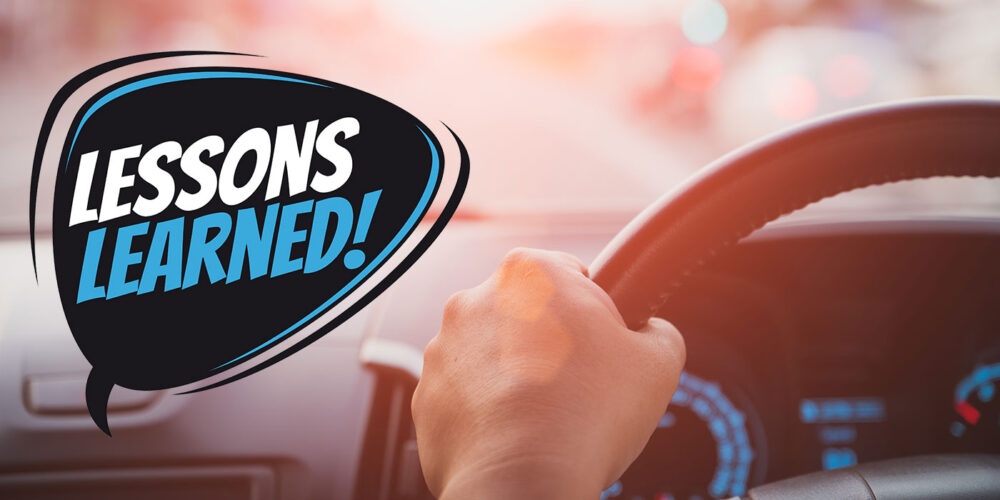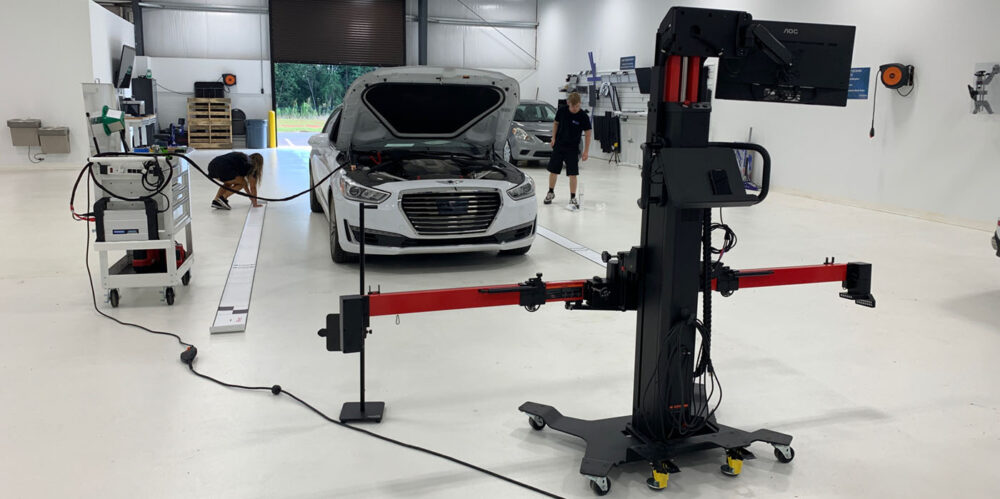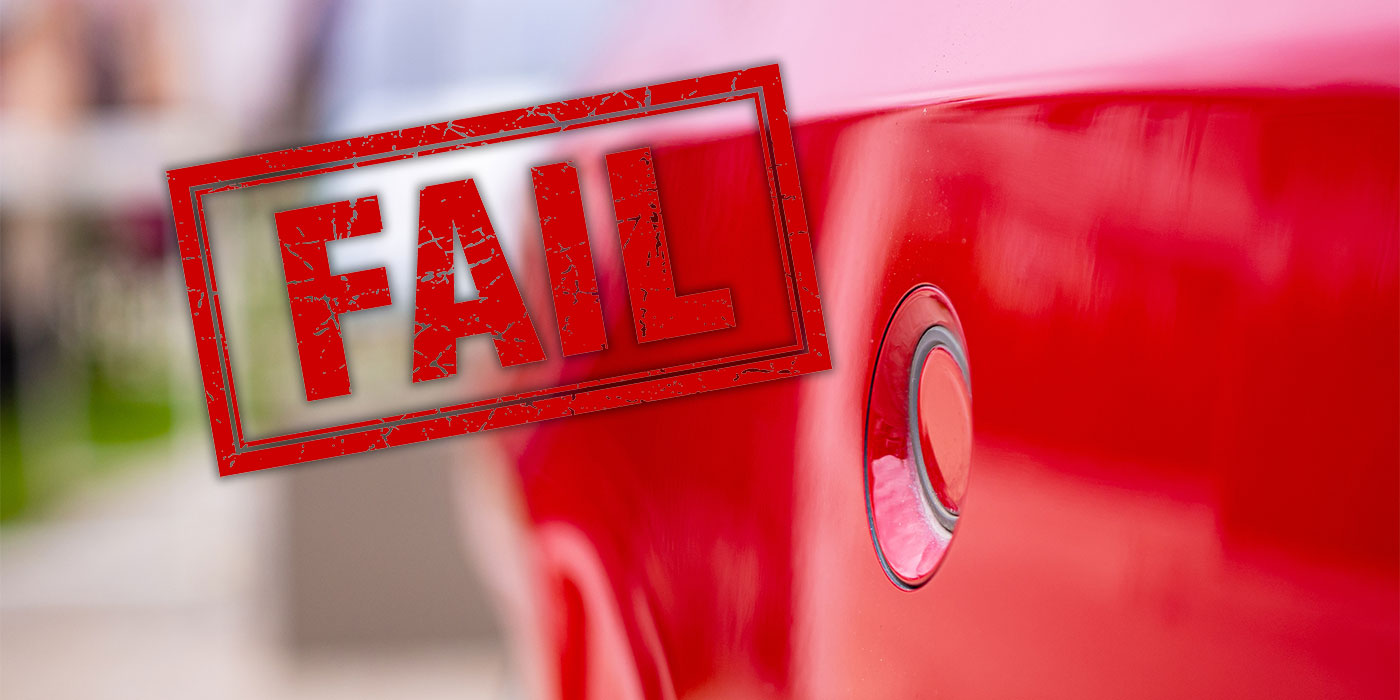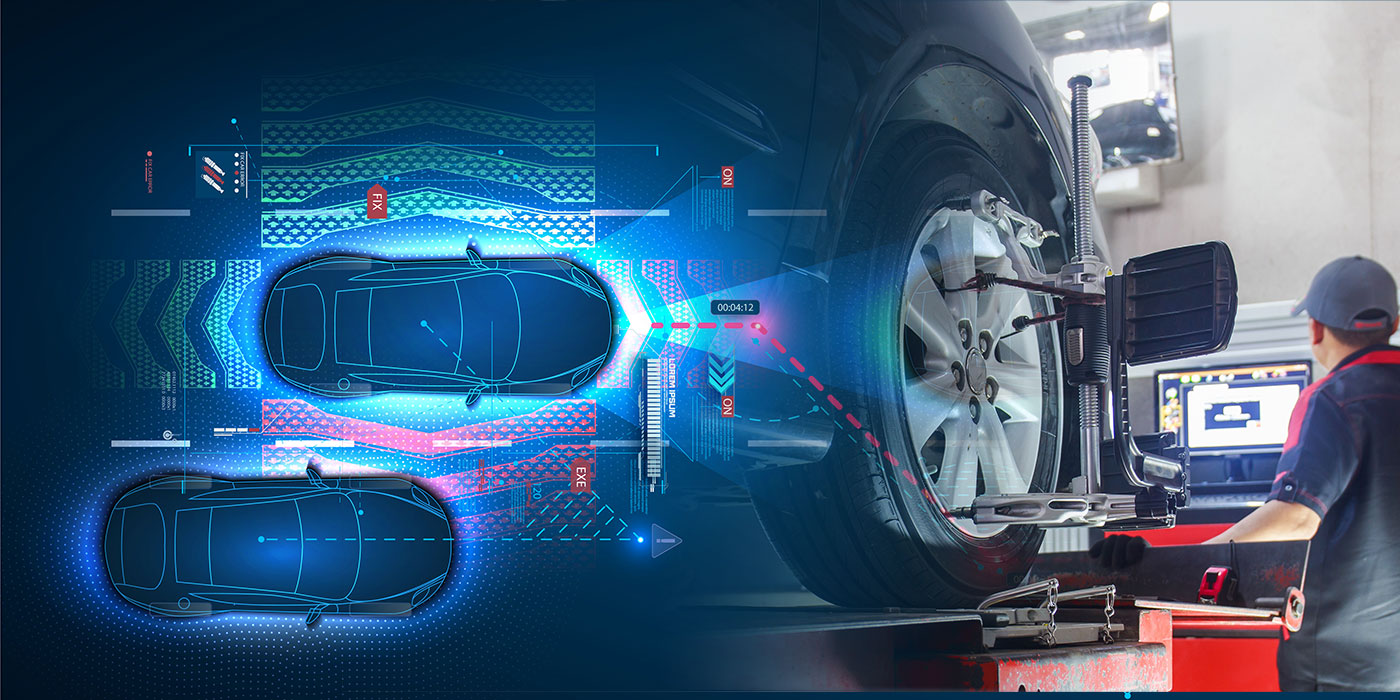Over my years in the collision repair industry, I’ve learned lots of valuable lessons. One is that nobody knows everything about how and why a part or system in a vehicle is engineered to function. I see this every day when challenges present themselves to my coworkers and they research the OEM repair procedures and wonder why it’s this way in the instructions.
It’s a great deal of work to keep up with procedures and processes — and then someone changes something. Change happens very quickly, and keeping up with change is a huge task in the collision repair industry. All this information that’s needed to repair a vehicle correctly takes us a great deal of time and energy to find, research and follow. Our customers also don’t know what it takes to repair a vehicle, and so they blindly trust their lives and their families’ lives with the understanding that you and your team know what to do to repair that vehicle correctly. A phrase I hear a lot in my work is, “Creating the ultimate customer experience,” and I appreciate what that means and the dedication it takes to deliver on that expectation. I can get very deep into all the nuances and facets of what it takes to live up to that phrase, but for me in my focused world, it’s about repairing the vehicle correctly for the family trusting myself and my team to do so.
The Ultimate Customer Experience
The ultimate customer experience is about delivering a vehicle that performs as designed by the original manufacturer. In the world of electronics, that requires all of us to be sure every system and feature is working correctly upon delivering the vehicle back to the customer. It’s not delivering a vehicle back that just looks good; it’s about the vehicle performing to the expectations of the vehicle manufacturer and owner. No longer is it just about welding, corrosion protection, paint or mechanical work. There are validations that must be performed to ensure vehicle features and systems operate after those repairs. And that’s what calibrations are for the ADAS features in today’s vehicles — they’re validations to system operations after the repairs of the vehicle are completed.
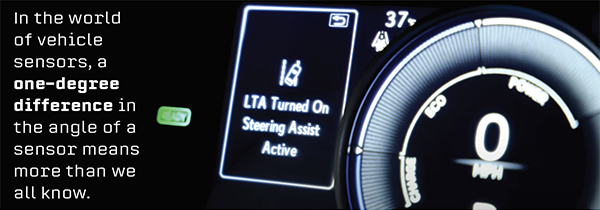
In the world of integrated electronics and the fusion of multiple sensors in a vehicle communicating and working together to produce a vehicle response, another phrase comes to mind: “Garbage in, garbage out.” This phrase is used by many in the world of electronics to explain how critical it is for the correct data to be supplied to the computer to provide a correct answer or, in our world, correct reaction from the vehicle. In the world of vehicle sensors, a one-degree difference in the angle of a sensor means more than we all know.
Static Calibrations
The world of vehicle repair has been changed dramatically by the saturation of advanced driver-assistance systems (ADAS) and other features introduced to improve occupant safety and create a more enhanced driving experience. The computers, modules and sensors all networked together have created a challenge for the repair industry that has given way not only to a new type of technician skill but a whole new industry. This new industry, along with technicians navigating the complexity of diagnosing, repairing and calibrating new vehicle electronics, is interesting and challenging, to say the least. Add in the procedures and tolerances between not only vehicle manufacturers but also year, make and model of vehicle within a vehicle manufacturer line, and you’ve got an even greater challenge for shops and technicians. Experience plays more of a factor in these repairs than most people realize; problem-solving skills are key to technicians’ success.
I’ve found that companies that have multiple technicians performing electronic repairs and calibrations have a unique advantage, especially if those technicians are sharing their experiences and solutions to challenges. The phrase, “Nobody wants to reinvent the wheel,” holds very true. If a technician experiences a challenge and navigates through that challenge, sharing the experience with others helps the entire team learn what to do and not waste time trying to find a resolution to something that has already been conquered.
Many people think any technician can pick up a scan tool and be successful doing calibrations. This may be true for many technicians, but much depends on the technician’s ability to follow directions. Lots of shops have learned that many processes can be done following the steps provided, but it doesn’t take long for technicians to learn that there will be challenges that must be overcome. A technician’s success at overcoming these challenges is based on his or her ability to diligently follow the procedures required and reason where the problem is.
Static Calibration Challenges
Calibrations after repairs validate that the sensors are aimed correctly and are operating in the correct field of view. When repairs are being performed, sensors may change in the angle that they “see.” An example would be a radar for the adaptive cruise control in a grille assembly being removed with the front bumper cover. When reassembled, this process alone can alter the way the radar is aimed. Add to this that the support bracket is very flimsy and easily bent in even a minor event. With the radar being integrated with the braking system of the vehicle, one degree of deviation can have a definitive impact on its operation. The calibration is the validation that the radar is providing the correct data input for all the systems integrated.
Doing the calibration correctly is part of the process that must not be taken for granted. I experienced this when we were testing ADAS calibration equipment. We completed the lane departure warning calibration on a Hyundai I was driving, and the calibration was successful according to the equipment but, five miles down the road, I had to come back as the vehicle was not responding correctly. Once the calibration was done following the OEM process, the vehicle handled correctly.
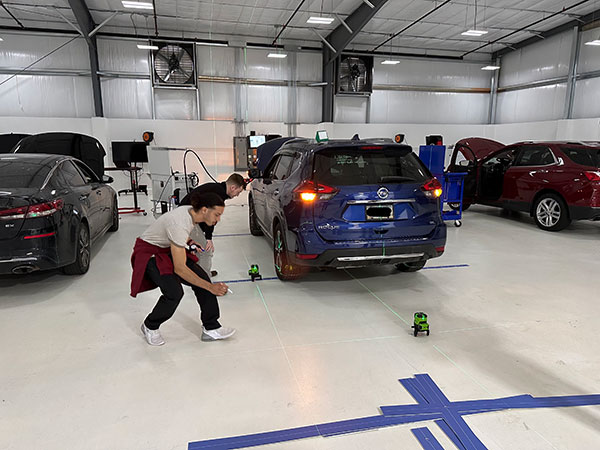
The first thing that many learn on the journey to doing static calibrations is that a scan tool can tell you a calibration was successful, but if the targets were placed incorrectly, the calibration can be wrong. It all comes down to the technician following all the steps. These steps include shop environment, such as a level surface (or datum plane) and lighting; vehicle prep to curb weight as to wheels, tires and tire pressure; fuel requirements for the calibration; as well as verifying that the alignment is correct and the technician following the specifications of up-to-date information on target placement. The camera and computer are aligning points on the target during the calibration to relearn where a zero point is. It’s very important for the technician to understand how lighting and glare can affect cameras or how a cluttered shop may affect radars as well. Another factor is the technician understanding sensor alignment procedures prior to doing the calibration. These are just some of the basics to be aware of to start — and they’re different for each manufacturer, year, make and model tolerance.
There is no perfect scan tool for all vehicles you’ll service. Some scan tools will do better than others depending on year, make and model. OEM scan tools are a great option for success on their respective vehicles but are largely cost-prohibitive for shops to carry them all. It’s up to an individual technician’s experience to figure out if the scan tool, VCI or software being used will communicate with the vehicle correctly. A scan tool may work on a 2023 but not on a 2024.
Another piece to the puzzle is if sensors or components are replaced. Having the correct scan tool or software makes a difference in coding and programming the vehicle or just completing updates that may be required before the calibration of older vehicles.
Static calibrations are complex operations but are repeatable, unlike dynamic calibrations that are affected by road conditions and other factors. The reliability and ability to repeat this process gives a shop the ability to deliver the vehicle after repairs are completed and the calibration is done.
Dynamic Calibrations
All the same factors that apply for static calibrations also apply to dynamic calibrations. The difference is that the targets are on the roadway and vehicle will need to be driven for the calibration to complete. There are some little twists, though, with dynamic calibrations.
Roadway conditions, as well as weather, play a major role. Clear, defined roadway markings and signage play a part during the drive. There may be a required speed and distance that may be included in the required parameters to successfully calibrate the vehicle, which can be tough in areas where traffic does not maintain the required speeds. Seasons and weather can delay calibration, possibly affecting vehicle delivery. This is where static calibrations have an advantage. But dynamic calibrations have the advantage of not needing targets and/or space in a shop to complete the calibration.
Dynamic calibrations somewhat depend on the technician performing the calibration to maintain the center of the lane and choose the best roadway. Another possible factor in the success or failure of the calibration is the direction of travel and location of the sun. The glare can have a definite impact on success and the time it takes to complete the calibration. Some dynamic calibrations can take up to 70 to 100 miles if conditions aren’t optimum. Experience comes into play when a technician can come to the conclusion that it’s taking too much time for the calibration to successfully complete and that the problem probably rests with an issue such as sensor misalignment.
There really is no definitive direction on which type of calibration is best. Some vehicles actually require both. No matter which calibration is used, following the directions precisely is tantamount to how long a calibration will take and/or if the calibration will be successful or not.
Summary
The importance of doing calibrations correctly is not just about safety but customer satisfaction and a shop’s reputation. Many of you reading this article are like me — we resisted this technology at first but then realized we’ve become dependent on ADAS operating correctly.
A whole new breed of younger drivers are learning to drive and rely on these systems. Performing the calibration correctly to be sure all systems are operating correctly is part of creating the ultimate customer experience. That experience is what will grow your business and your reputation.

